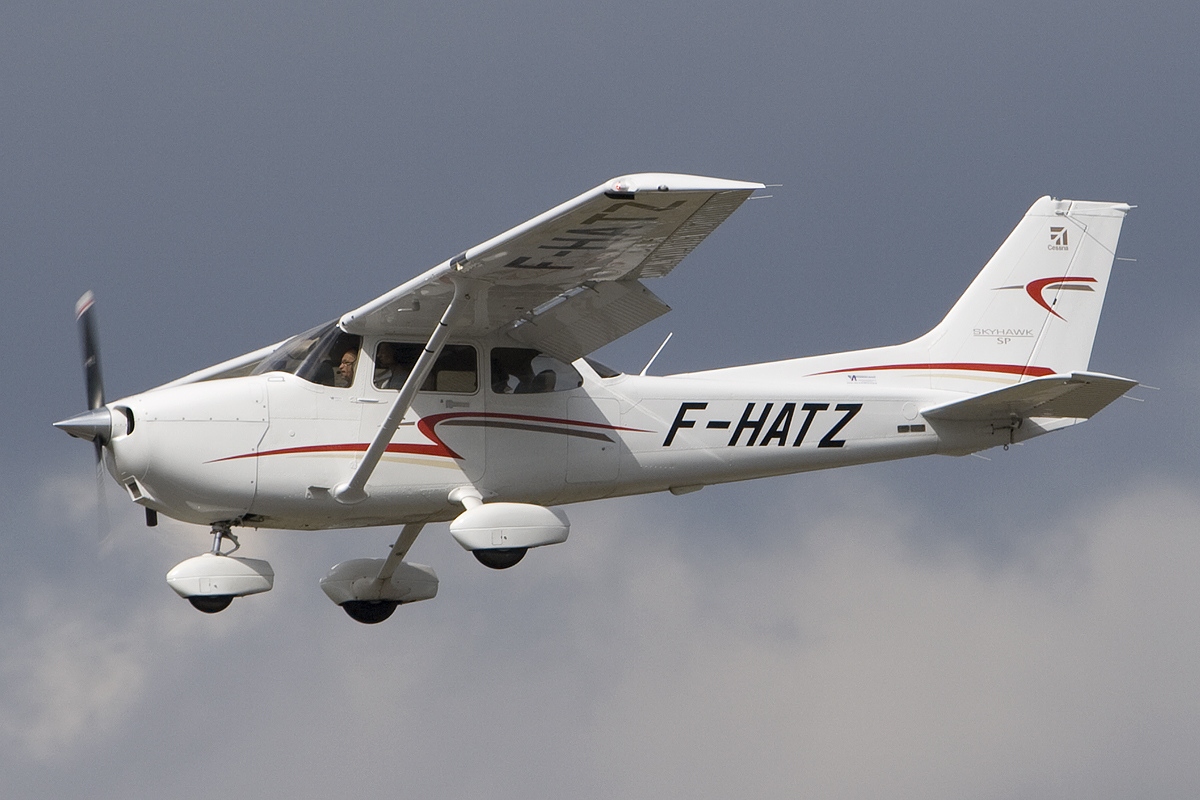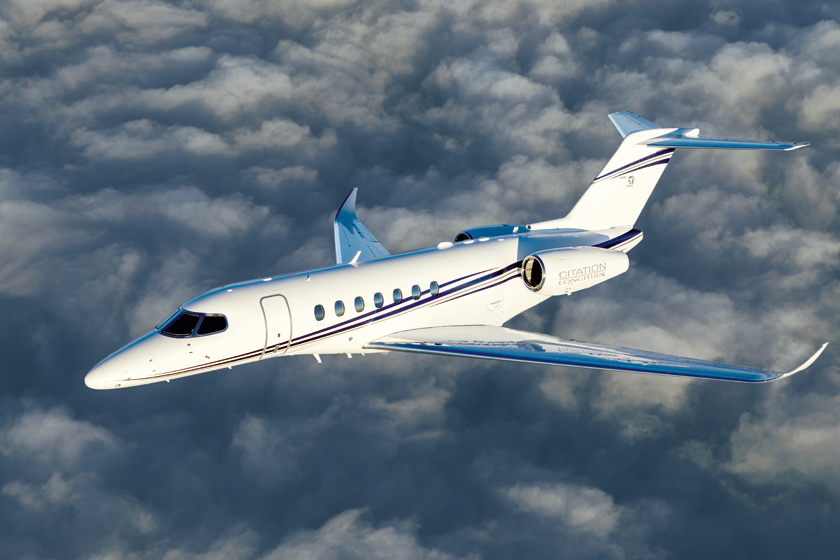
Cessna

The super-midsize Citation Longitude is now the flagship Cessna bizjet. The first serial copy left the assembly hall on June 13, 2017. The plane received the FAA type certificate on September 21, 2019.
Cessna Aircraft Company is the undisputed leader in the production of general aviation aircraft - for business, tourist, utility and training. The company was founded in 1927, but its development gained pace only after World War II. By the 50s and 60s, it had become so well known that even the average American, uninterested in aviation, would associate the name Cessna with these little planes taking off and landing at a nearby airport. The company has been operating under the Textron Aviation brand since 2016, but the Cessna name continues to function as an aircraft brand.
The founder of the Cessna Aircraft Company was Clyde Vernon Cessna - farmer, mechanic, car salesman, talented self-taught constructor and pilot. He was born on December 5, 1879 in Hawthorne, Iowa. In early 1881, his family moved to a farm near Rago, Kansas. Despite having no formal education, Clyde had an interest in technology from childhood and often helped local farmers repair farm machinery. In 1905, he married and three years later joined the Overland Automobiles dealer in Enid, Oklahoma. He achieved considerable success in this industry and his name even hit the sign above the entrance.

The first airplane built and flown by Clyde Cessna in 1911 was the Silver Wings monoplane. In the photo from April 1912, rebuilt after an accident and slightly modified Silver Wings during the demonstration flight.
He caught the aviation bug at the Oklahoma City air show on January 14–18, 1911. Cessna not only admired the sky-high performances, but also talked to pilots (including the later French fighter ace Roland Garros) and mechanics, asked a lot of questions and took notes. He decided to build his own plane modeled on the monoplane Blériot XI. For this purpose, in February, he went to New York, where he bought the fuselage of a copy of the Blériot XI from the Queens Airplane Company. By the way, he looked at the production process and made several flights as a passenger. After returning to Enid, in a rented garage, he started building the wings and tail on his own. After many unsuccessful attempts, he finally mastered the art of piloting and in June 1911 he flew his plane, which he called the Silver Wings.
The first public demonstration flights were not very successful. To make matters worse, on September 13, 1911, the Silver Wings crashed and Clyde was hospitalized. The rebuilt and modified plane was flown by Cessna on December 17. From 1912 to 1913, Clyde participated in numerous air shows in Oklahoma and Kansas, which he organized with his brother Roy. On June 6, 1913, a new, built from scratch plane flew, which on October 17, 1913 made the first flight over Wichita, Kansas. In the following years, Cessna built new and better planes, which it successfully demonstrated in flight during the summer season. The Cessna's exploits caught the attention of several Wichita businessmen who invested money in setting up an aircraft factory. Its headquarters was in the buildings of the JJ Jones Motor Company in Wichita. The inauguration of the activity took place on September 1, 1916.
In 1917, Cessna built two new planes. The two-seater Comet with a partially covered cabin was tested on June 24. Two weeks later, on July 7, Clyde set a national speed record of 200 km / h behind his controls. Following the United States' accession to World War I in April 1917, civil fuel supplies were significantly reduced. The Cessna offered its planes to the federal government, but the military preferred proven French-made machines. Due to the lack of orders and the possibility of organizing air shows, Cessna closed the factory in late 1917, returned to his farm and turned to agriculture.
In early 1925, Cessna was visited by Lloyd C. Stearman and Walter H. Beech, who invited him to join the company to build planes with a metal structure. After acquiring the investor Walter J. Innes Jr. On February 5, 1925, the Travel Air Manufacturing Company was founded in Wichita. Innes became its president, Cessna became vice president, Beech became secretary, and Stearman became chief designer. At the end of the year, after Innesa left the company, Cessna took over as president, Beech vice president, and Stearman as treasurer. Travel Air's first airplane was the Model A biplane. Cessna preferred monoplane planes from the start, but failed to convince its partners. In his spare time, he built his ninth plane - the single-engine, monoplane Type 500 with a covered cabin for five passengers. It was tested personally by Clyde on June 14, 1926. In January 1927, National Air Transport ordered eight copies in a slightly modified form, designated as Type 5000.
Own company
Despite its success, Cessna's next idea - self-supporting wings - also failed to gain recognition from Walter Beech (Lloyd Stearman left the company in the meantime). So, in the spring of 1927, Cessna sold Beech his stake in Travel Air, and on April 19, announced the creation of its own Cessna Aircraft Company. Together with the only employee at that time, he started building two planes in a self-supporting monoplane system, unofficially known as All Purpose (later Phantom) and Common. The wing strength tests, necessary for the Department of Commerce to grant the official Approved Type Certificate (ATC), were carried out by prof. Joseph S. Newell of the Massachusetts Institute of Technology (MIT).
The three-seat Phantom was first flown on August 13, 1927. The plane turned out to be very successful and Cessna decided to start its serial production. To raise funds, he sold part of his company shares to Victor H. Roos, a motorcycle dealer in Omaha, Nebraska. Following this, on September 7, the company was officially registered under the name of Cessna-Roos Aircraft Company. Its seat was in new buildings in Wichita. In December of the same year, Roos sold his shares to Cessna, and on December 22, the company changed its name to Cessna Aircraft Company.
The Phantom gave rise to an entire family of aircraft known as the A Series. The first one was handed over to the buyer on February 28, 1928. Until 1930, over 70 units were produced in the AA, AC, AF, AS and AW versions, differing mainly in the engine used. The three-four-seater BW model was much less successful - only 13 were built. Another CW-6 aircraft with seats for six passengers and the CPW-6 two-seater rally built on its basis remained only in the form of single copies. In 1929, the DC-6 model and its two development versions, the DC-6A Chief and the DC-6B Scout, went into production (50 were built along with the prototype).